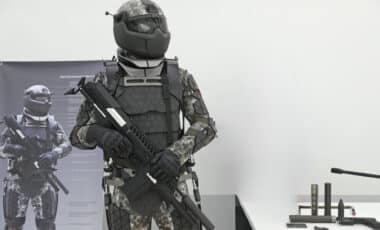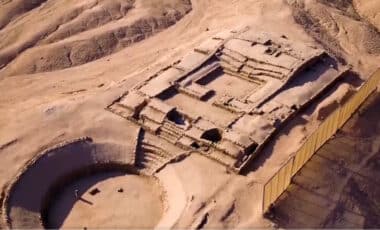War doesn’t just spur nations to create better offensive and defensive technology; it can also lead to everyday products and technology made necessary due to shortages and changing needs in times of war. Here are just a few examples of technology developed during the Great War that we still use.
1. Air Traffic Control
Prior to World War I, pilots were virtually isolated once they left the ground with no ability to receive information. The United States Army developed and installed the first two-way radios in planes during WWI, but before America became involved in the war. Two-way radios were developed in San Diego in 1915 with the ability to send telegraphs over a distance of 140 miles a year later. In 1917, the technology advanced to allow human voices to be transmitted from a plane to a ground operator. The first Airport Traffic Control tower to regulate arrivals, departures, and aircraft movement opened in Cleveland, Ohio in 1930.
2. Industrial Fertilizer
Just before the Great War, German chemists Carl Bosch and Fritz Haber developed a new process to convert atmospheric nitrogen into a biologically available form called ammonia with high temperature and pressure. This allowed Germany to create artificial nitrates for explosives like TNT during the war rather than relying on a very limited supply of nitrates from guano deposits.
While developed for war, the technology is still used to create nitrate fertilizers, which help sustain industrial agriculture around the world. Industrial-sized farms today use a refined version of this same process.
Those with military history degrees may know about cellucotton, a processed sugarcane byproduct that was first introduced during the Great War as a field bandage that was cheaper and more absorbent than cotton. Army nurses quickly realized that cellucotton pads made excellent sanitary napkins as well. Kimberly-Clark launched Kotex in 1920 to use leftover cellucotton from WWI bandages, creating the first disposable feminine hygiene product in the world.
4. Mobile X-Rays
The war left millions of soldiers on the field with life-threatening injuries and limited diagnostic tools. Existing X-ray machines offered potentially life-saving technology, but the machines were too delicate and bulky to move out into the field. Marie Curie worked with the French military to create mobile X-ray devices after war broke out. By 1914, she had installed the machines into small trucks that toured surgical stations. When the war ended, there were eighteen “Little Curies” in operation. Frederick Jones, an American inventor who went on to create air conditioning units, refrigeration units, and self-starting gas lawnmowers, helped create an even smaller portable X-ray machine in 1919.
These are merely four examples of dozens of forms of technology that came into existence due to the Great War. Sanitary napkins, mobile X-ray machines, industrial fertilizer, and air traffic control have saved and improved millions of lives since the war, leaving a legacy of far more than death and destruction. Despite the atrocities of war, necessity is still truly the mother of invention.
Technique World War 1 World War One








